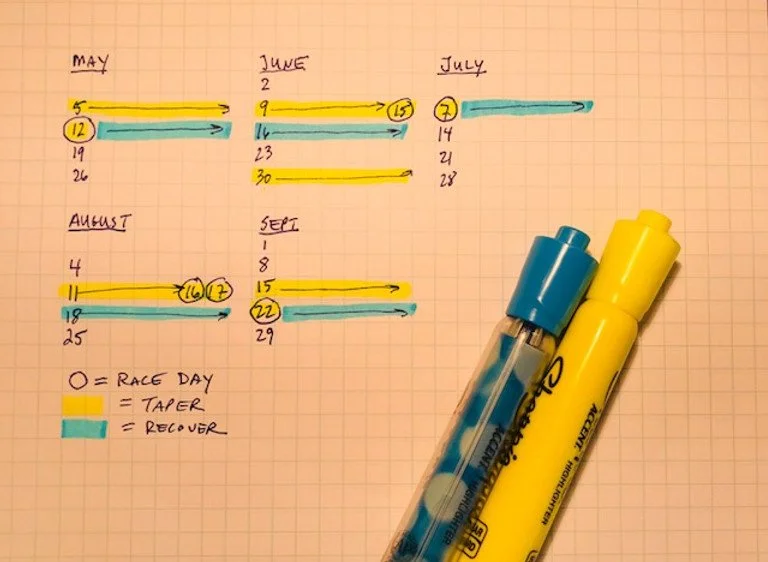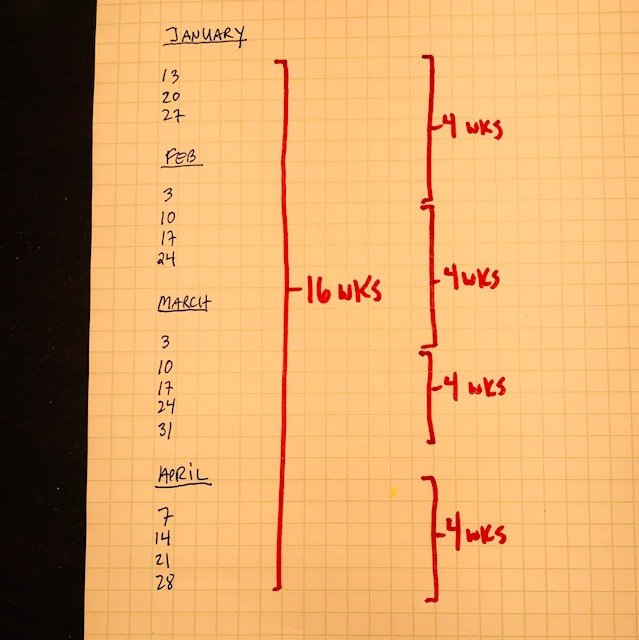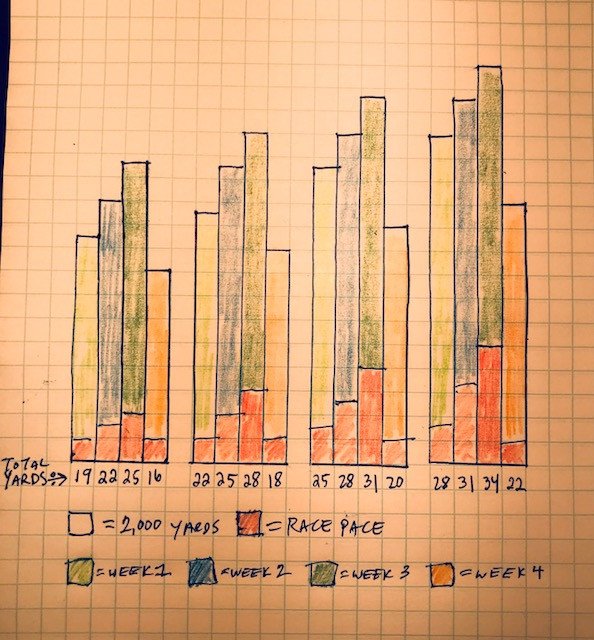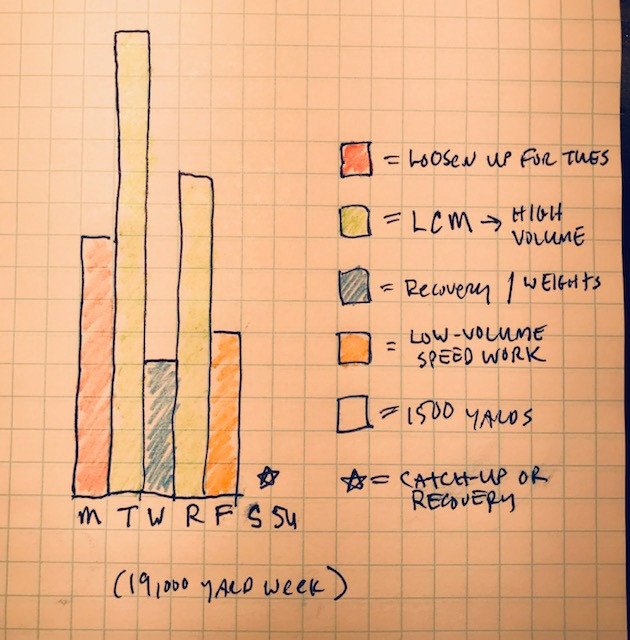Training plans: How I built mine
It took a few months, but I finally settled on my open water race schedule for this year.
Now it’s time to design a training schedule.
I’ll walk you through how I built mine. Many of the underlying principles are universal and can be applied across sports and athletic disciplines.
That said, even within the sport of swimming, there are many different philosophies and strategies to reach peak performance when it counts – on race day.
Mine is intended to prepare for open-water races of distances between one and six miles. It’s based on the principle of periodization, which means to manipulate training variables, including overload and recovery.
(A sprinter’s training schedule might actually look opposite of mine in several ways, even while following the same concepts. Ok, no might about it. It definitely would.)
Ok, so here we go.
1. First, I penciled in my races on a calendar and blocked off one week prior to taper and one week after to recover.
I’m liking this! These are gonna be my favorite 10 weeks of the year
2. Next, I calculated how much time I had before the first race. Luckily, this broke out into a nice even number – 16 weeks.
I’m not an expert, but my research and past experience shows that the body needs between 4-6 weeks to adapt to demands placed on it for physiological change.
So, I broke my time before the first race into four-week blocks.
3. Now for the good stuff.
There are a few things going on here at once, so I’ll walk you through them.
Officially, the 16-week period is called a macrocycle – the large, overarching training period. Each of the 4-week clusters is a mesocycle.
As you can see in mine, the total yardage increases each week for the first 3 weeks of each mesocycle, and then drops in week 4. Total yardage gradually increases from one 4-week cycle to the next. (The number below each week is yards in thousands – so 19 on the very first week is 19,000 yards.)
So what’s up with the red blocks – where it says race pace? Well, there is more to training than just yardage. The areas in red represent training at the pace I’d like to hold for any one of my planned races. In the final cycle, the total amount of race pace work equals 6 miles, the distance of my longest race.
(Not to complicate matters, but you could also track your training – again, especially for sprinters – based first on intensity and speed rather than yardage.)
4. Finally, I broke down each week. This is what is called the microcycle – the smallest set of planning.
My plan looks like: Mondays with moderate yardage and low intensity to prepare for a BIG Tuesday, which is perfect because my pool is long course meters on Tuesdays and Thursdays. Wednesday is recovery from Tuesday and perhaps some weight training. Then Thursday is long again, followed by short distance, speed work on Fridays.
Of course, there are sets to be written for each day. But I’ll tackle that from week to week.
What is NOT shown here is a plan for the weeks between my races from May to September. Those gaps vary from 2-4 weeks.
There’s a good reason I haven’t planned for that yet: I’m not exactly sure what I’m going to do.
There is an art and science to all of this, but when it comes to maintaining top conditioning across a long period of time – such as I will face all summer – that’s definitely in the art category. It may also be impossible and require me to aim a big taper at just one event.
From now until then, I’m going to log my workouts carefully, along with notes about how I feel, and draw on those to design 2-4 week mesocycles between races.
Time to write tomorrow’s workout.




